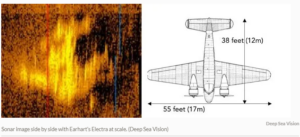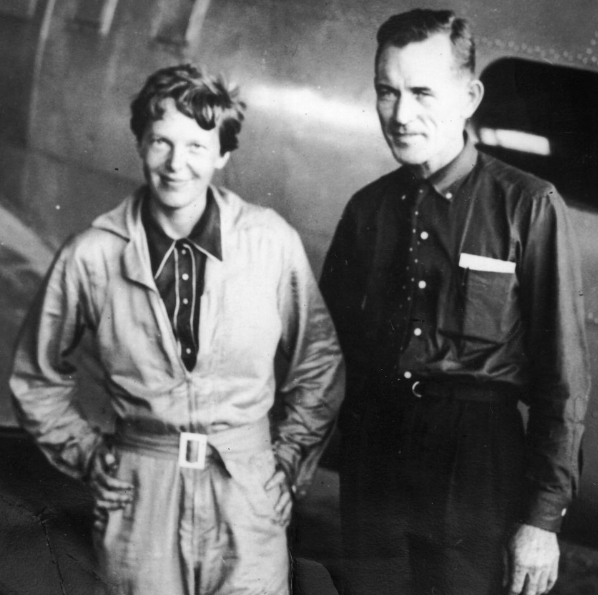After an extensive deep-water search, a group of underwater archaeologists and marine robotics experts have unveiled a sonar image that may answer the greatest modern mystery – the disappearance of Amelia Earhart.
A South Carolina exploratory team claims it may have found the plane Amelia Earhart was flying when she disappeared in July 1937.
Robotic company Deep Sea Vision (DSV) said in a press release that a sonar image it recorded “in a swath of the Pacific untouched by known wrecks” could finally put to rest one of the nation’s most enduring mysteries.

DSV said it came upon the image’s location based on the 2010 Date Line Theory, which suggests Earhart’s exhausted navigator forgot to turn his calendar back a day after crossing the International Date Line. That could have caused a celestial star navigation miscalculation, landing the plane 96km west of its intended destination.
No one had explored that area until now, DSV said. Company CEO Tony Romeo said the wreck they spotted appears to be intact.
“We always felt that (Earhart) would have made every attempt to land the aircraft gently on the water, and the aircraft signature that we see in the sonar image suggests that may be the case,” he said.
Assisted by underwater archaeologists, DSV’s marine robotic experts spent 90 days searching a 8370sqkm area of the Pacific Ocean floor using a submersible called the HUGIN 6000.
The vehicle’s side scan sonar is said to have nearly four times the reach of previously used equipment of its kind. The company is keeping the exact coordinates of its find private pending further examination.
Earhart, along with navigator Fred Noonan, disappeared during a 2,500-mile flight from New Guinea to Howland Island as they attempted to circle the globe. Speculation about their final flight has held the nation’s attention ever since.
The aviator was declared dead in absentia on Jan. 5, 1939.
Researchers at the Pennsylvania-based International Group for Historic Aircraft Recovery said in 2014 they believed a piece of debris was discovered on a remote Pacific atoll in 1991 came from Earhart’s aircraft. An anthropology professor at the University of Tennessee said in 2018 he believed skeletal pieces found on the west Pacific’s Nikumaroro Island in 1940 belonged to The 37-year-old pilot. Dozens of alleged witnesses claimed they heard Earhart calling for help via radio as her situation worsened.
Smithsonian’s National Air and Space Museum aeronautics curator Dorothy Cochrane told Smithsonian the image captured by DSV is “intriguing” and merits further examination.

